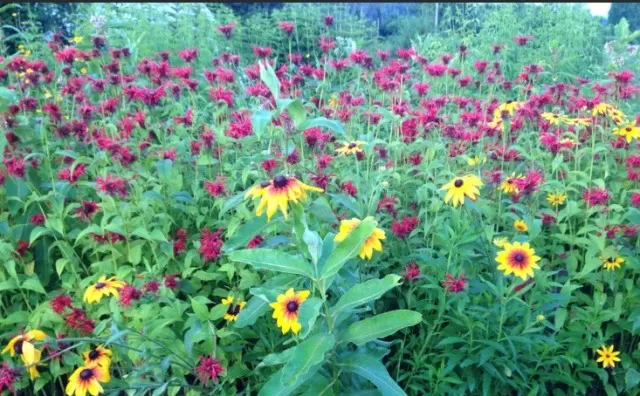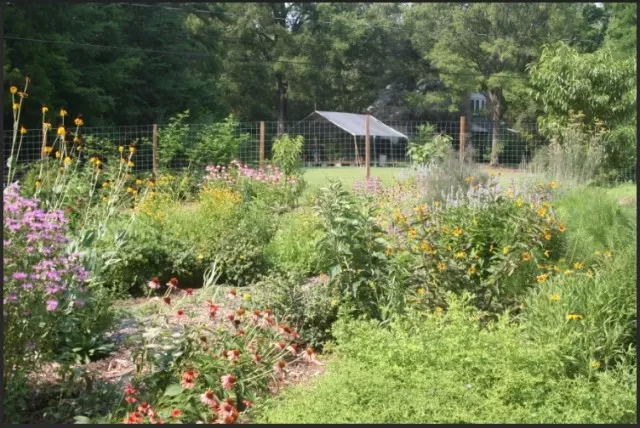Key Features of a Flourishing Pollinator Garden. Transforming your pollinator garden into a thriving habitat requires the incorporation of several essential elements. By enhancing your garden in these ways, you can create a complete and sustainable ecosystem that not only attracts pollinators but also supports a diverse range of wildlife.By incorporating these essential elements into your pollinator garden, you can create a replete habitat that not only supports pollinators but also contributes to the overall biodiversity and ecological health of your local environment.
Creating a Nourishing Haven for Pollinators through Diverse Food Sources

In order to establish a thriving pollinator garden, it is imperative to provide an array of abundant foraging resources, mainly in the form of pollinator plants.
These plants, adorned with vibrant blooms, offer an enticing combination of nectar and pollen, which serve as the primary sources of sustenance for a wide range of pollinators.
For many pollinators, such as honey bees and native solitary bees, these nectar-rich blooms provide the essential carbohydrates and energy required for their daily activities.
Simultaneously, the pollen they collect from these flowers serves as a vital source of protein and crucial nutrients, sustaining their well-being.
The stars of the pollinator realm, these native solitary bees, along with honey bees, heavily rely on these nectar and pollen-bearing plants.
Butterflies and moths, on the other hand, primarily indulge in nectar consumption, though certain species may occasionally supplement their diet with tree sap. Pollinating flies and beetles exhibit a more versatile palate, occasionally nibbling on various parts of flowers in addition to nectar and pollen.
Meanwhile, hummingbirds and pollinating bats diversify their diet by incorporating insects alongside nectar and pollen. Remarkably, overripe or decaying fruit also serves as a valuable food source for these industrious pollinators.
In order to cater to the unique dietary preferences and physical attributes of different pollinators, a well-rounded pollinator garden must encompass a wide spectrum of flower sizes, colors, and structures.
This variation is key, as the tongue lengths of pollinators can vary significantly. Therefore, the selection of pollinator-friendly plants should encompass a diverse range of flower forms, including flat and open-faced varieties akin to coneflowers, elongated and tubular options like salvia, and petite clusters of pollinator-attracting blooms exemplified by mountain mint.
By thoughtfully curating this botanical buffet, your garden becomes a sanctuary for pollinators, ensuring their access to the nutrition they need for their vital role in the ecosystem.
Creating a Cozy Abode for Pollinators

Transforming your garden into more than just a pit stop for pollinators is the goal; it’s about crafting a genuine haven, a habitat where these essential creatures can thrive.
This endeavor calls for the provision of shelter, a vital component that allows pollinators to find refuge, rest, seek protection from the elements, evade potential predators, and nurture their offspring.
Shelter takes on various forms in the pollinator habitat.
It can encompass the lush foliage of plants and shrubs, where pollinators can find respite from harsh weather conditions and shield themselves from prying eyes. It extends to cozy nooks and crannies within your garden, such as leaf litter, tree hollows, or tucked-away corners, offering a safe sanctuary for pollinators to seek refuge and even build nests.
Moreover, consider incorporating specially designed structures like bee houses or butterfly shelters, which provide tailored accommodations for solitary bees or butterflies to lay their eggs and rear their young.
These shelters not only fulfill the practical needs of pollinators but also add a charming architectural element to your garden.
In essence, by offering a place of respite and protection, you are not just inviting pollinators into your garden; you are providing them with a true home, a habitat where they can flourish and continue their vital role in the intricate tapestry of our ecosystem.
The Essential Role of Water in Supporting Pollinators

Water is a fundamental requirement for all forms of wildlife, and pollinators are certainly no exception to this rule.
While the focus of a pollinator garden may primarily revolve around nectar-rich flowers, the inclusion of water resources is a frequently underestimated yet crucial aspect of a thriving pollinator habitat. .
While nectar serves as the primary source of sustenance for pollinators, it is important to acknowledge that hydration is equally vital for their well-being.
By integrating clean and accessible water sources into your pollinator garden, you contribute to the health and hydration of the pollinating wildlife that relies on this space.
These water sources can take various forms, from shallow dishes or bowls filled with Clean Water to small ponds or birdbaths.
The provision of water not only quenches the thirst of pollinators but also serves as a gathering place where they can congregate and socialize. Additionally, water bodies in your garden may attract other beneficial insects, creating a holistic and balanced ecosystem.
In summary, water plays a pivotal role in sustaining pollinators and supporting the overall biodiversity of your garden.
By thoughtfully incorporating water resources into your pollinator habitat, you create a nurturing environment that ensures the health and vitality of these essential creatures in our natural world.
Creating a Pollinator Garden: Tailoring Your Space for the Well-being of Pollinators
No matter the size or type of outdoor space you have, whether it’s a vast open lawn, a cozy city backyard, or even a balcony container garden, you can make a meaningful contribution to the welfare of our pollinator friends.
By providing them with a sanctuary where they can feed, rest, and thrive, you’re playing a vital role in supporting these essential creatures.
There is no one-size-fits-all blueprint for crafting a pollinator garden, as each region, landscape, green space, and backyard is unique.
However, you can follow these general steps while keeping in mind the three essential components of a healthy pollinator habitat: food, shelter, and water. Use these guidelines to shape your pollinator garden design:.
Assessment of Your Space: Begin by evaluating your outdoor area.Take note of its size, layout, sunlight exposure, and existing vegetation. Understanding these factors will help you make informed decisions about plant selection and layout.
Plant Diverse Flora: Choose a variety of flowering plants that provide nectar and pollen throughout the growing season.Opt for a mix of native plants and cultivars known to attract pollinators. Different pollinators have distinct preferences, so offering a diverse array of plant species will cater to a broader range of species.
Create Planting Zones: Organize your garden into distinct planting zones based on factors like plant height, water requirements, and sunlight needs.This helps create a visually appealing and ecologically efficient garden.
Mindful Plant Placement: Position taller plants toward the back of the garden and shorter ones in the front to maximize sunlight exposure for all.Group similar plants together to create attractive clusters that are easier for pollinators to locate.
Provide Shelter: Integrate natural or artificial shelter elements, such as dense shrubs, tree branches, or specially designed insect habitats like bee houses.These features offer pollinators protection from harsh weather conditions and potential predators.
Water Resources: Include clean sources of water like birdbaths, shallow dishes, or even a small pond.These serve as vital hydration spots for pollinators and add to the overall allure of your garden.
Avoid Pesticides: Embrace natural pest control methods and avoid using chemical pesticides.These chemicals can harm pollinators and disrupt the ecological balance of your garden.
Maintenance: Regularly tend to your garden by deadheading spent blooms, weeding, and mulching to keep it in optimal condition.
Observe and Learn: Pay attention to the behavior of the pollinators in your garden.This can help you understand their preferences and make adjustments accordingly.
Educate and Share: Share your knowledge and passion for pollinator gardens with friends, neighbors, and your community.Encourage others to create their own pollinator-friendly spaces.
Remember that creating a pollinator garden is a journey, and it may take time for the garden to reach its full potential.By embracing these principles and adapting them to your unique space, you’re contributing to the well-being of pollinators and enriching the biodiversity of your local environment.
*The information is for reference only.